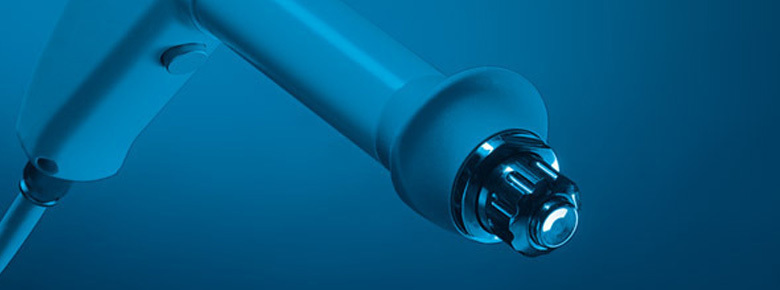
SHOCKWAVE THERAPY
Shockwave therapy is a new non-invasive solution for musculoskeletal pain. This method is based on an acoustic wave that penetrates the tissue and promotes collagen production, new blood vessel formation and decrease of chronic inflammation. The shockwave therapy is frequently used in physiotherapy, orthopedics and sports medicine.
Shockwave is an acoustic wave. Shockwaves are generated by compressed air at the built-in air compressor of the shockwave therapy machine. Shockwaves are characterized by jump change in pressure, high amplitude and non-periodicity. Then created shockwaves are transferred to the transmitter at the end of the applicator and further into the tissue of human body. Shockwaves carry high energy to painful spots, muscles, bones or joints. The energy promotes regeneration and cure processes of the bones, tendons and other soft tissues.
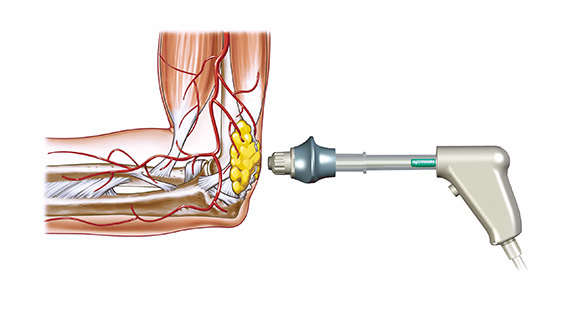
THERAPEUTIC EFFECTS
- Promotion of accelerated tissue repair and cell growth
- Decreasing of pain
- Mobility restoration
- Dissolution of calcified deposits
- Release of trigger points
- Reversal of chronic inflammation
- Stimulation of collagen production
- Formation of new blood vessels
COMMON APPLICATIONS
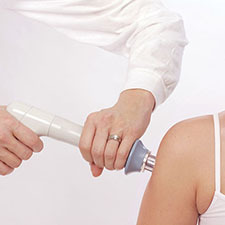
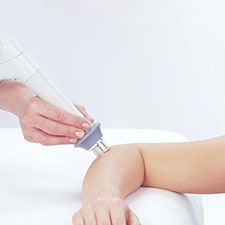
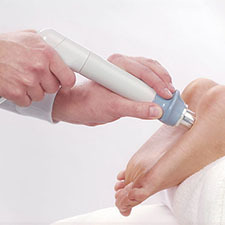
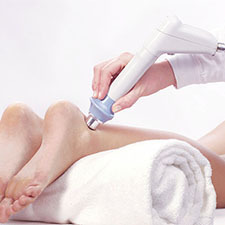
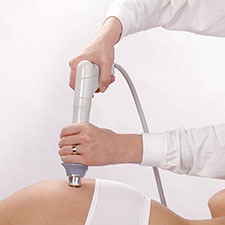
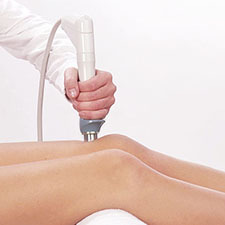
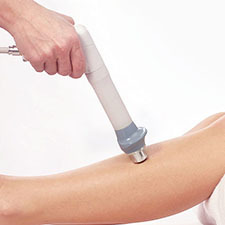
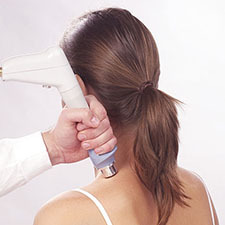
FAQ
Will Shockwave therapy help me?
Most patients with chronic pain problems have been through various unsuccessful types of treatments. Up to 80% of the same patients worldwide report that Shockwave therapy has helped them eliminate their problem.
Does the therapy hurt?
There may be a slight feeling of discomfort during the treatment, depending on the level of pain the patient is already experiencing in the area. However, since the treatment lasts only about five minutes, most patients are able to tolerate this discomfort. Additionally, the intensity of the treatment can be adjusted throughout the session.
How many sessions will I need?
The number of treatments varies depending on the indication and tissue response. The effect of the treatment is cumulative, so you will typically need 4-6 treatments. Very often though, you will experience relief right after the first treatment.
How often will I need the treatment?
Most indications require one treatment per week, depending on the patient’s tolerance and their tissue response.
Will I feel any pain after the treatment?
Most patients will experience an immediate pain relief following the treatment. However, within 2–4 hours after the treatment, they may experience some soreness in the treated area. This soreness has been reported as tolerable and not limiting.
Are there any restrictions after the treatment?
It is recommended that patients refrain from physical activity, especially one that would involve the treated region, for about 48 hours following each treatment session.
